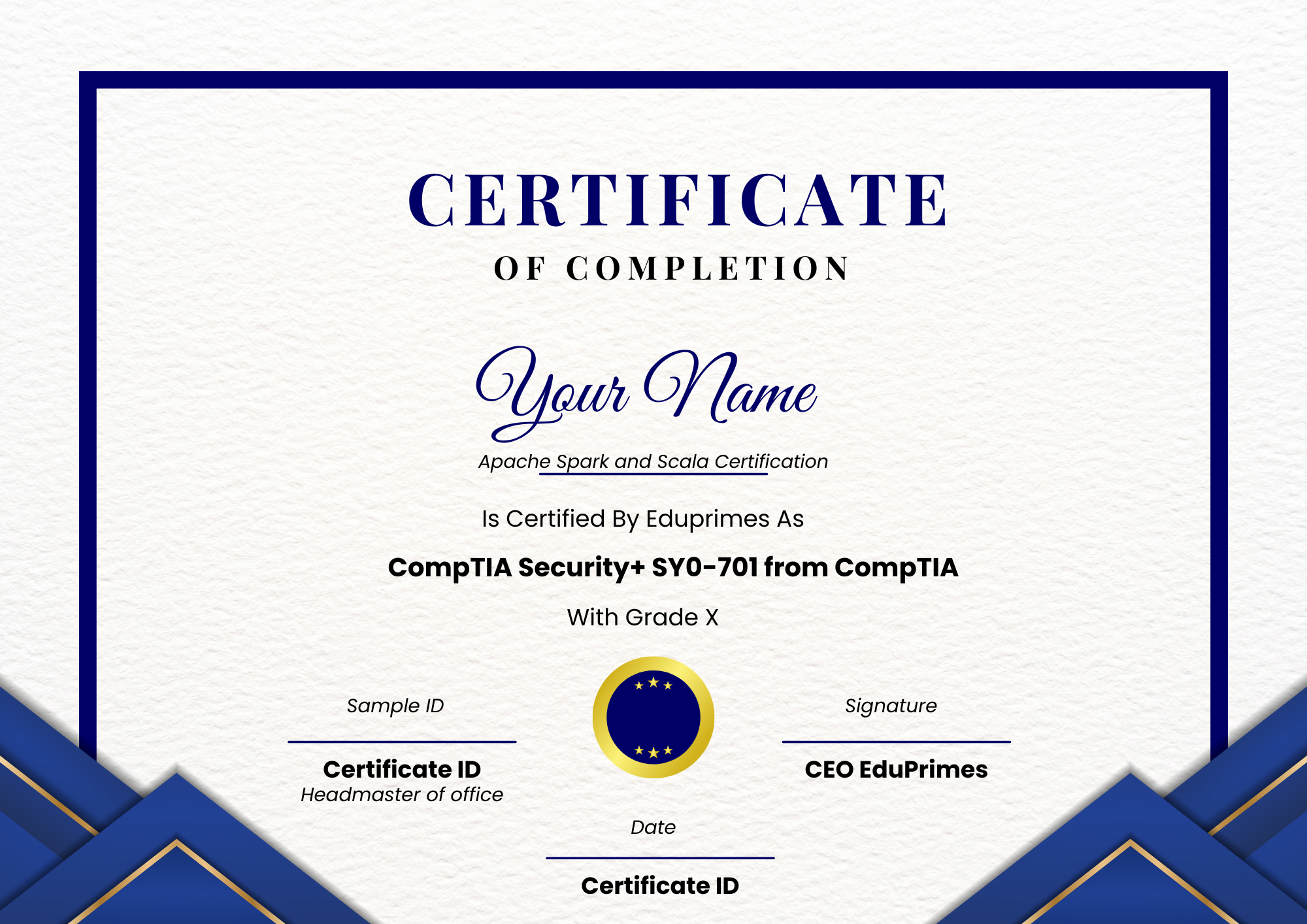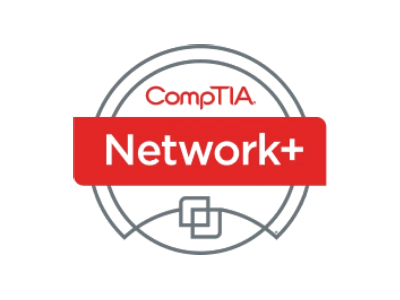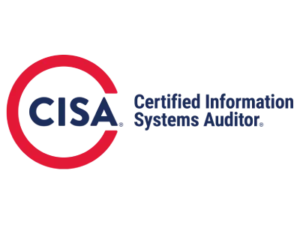Overview
The CompTIA Network+ (N10-008) course is a thorough educational program that gives students the networking abilities they need. It offers a thorough overview of Ethernet wiring, network operations, network security, network implementations, and troubleshooting methods. In this course, students will learn how to deploy wireless standards, manage bandwidth, setup subnets, and comprehend a variety of network software tools and commands. Important subjects including routers, network topologies, IPv4 and IPv6 networks, and standard security concepts are also covered. The CompTIA Network+ course guarantees that students understand disaster recovery, network hardening strategies, and organizational and physical security ideas.
What you will learn with the CompTIA Network+ (N10-008) certification?
– Gain a deep understanding of the Open Systems Interconnection (OSI) model and encapsulation concepts, critical for any network plus training.
– Learn about various network topologies and types, essential in any CompTIA Network Plus N10 008 course.
– Understand the use and purpose of network services, a significant part of network plus training online.
– Delve into the specifics of network security, including common security concepts and network hardening techniques, vital in modern CompTIA Network Plus courses.
– Get hands-on experience in network troubleshooting, including dealing with common cable and wireless connectivity issues, a crucial part of n10 008 training.
– Learn about network hardening techniques and understand the importance of physical security, both key aspects for anyone pursuing network plus training.
– Finally, students will be introduced to cloud concepts and the basics of datacenter architecture, making this course comprehensive and relevant to current industry needs.
Who should go for CompTIA Network+ (N10-008) course?
System engineers, network engineers, network administrators, and IT professionals can all benefit greatly from taking the CompTIA Network+ (n10-008) course. A solid foundation in network infrastructure management, upkeep, troubleshooting, and configuration is provided by this network plus training. Network + online training allows professionals to advance their abilities at their own speed.
Why Should You Learn CompTIA Network+ (N10-008) course?
Achieving a certification and passing the CompTIA Network+ test demonstrates to potential employers that you are capable of managing significant proprietary networks according to modern best practices. You won’t be able to access employment chances without Network+, a vendor-neutral networking certification that is sought and recognized throughout the world. This accreditation offers more chances for job progress and shows evidence of accomplishment acknowledged by the industry.
Our Package
0.1 Instructor Intro
0.2 Course Overview
1.1 Intro to Networking
1.1.1 Activity: Creating a Network
1.2 Common Terminology
1.2.1 Activity: Examining Ports and Sockets
1.3 OSI Model
1.4 DoD Model
1.4.1 Activity: Examining Network Layers
1.5 TCP, UDP, IP
1.5.1 Activity: Examining TCP
1.5.2 Activity: Examining UDP
1.5.3 Activity: Examining IP
1.6 ICMP, IGMP, ARP
1.6.1 Activity: Examining ICMP
1.6.2 Activity: Examining ARP
1.6.3 Activity: Examining IGMP
1.7 Network Topologies
1.8 Network Types
1.9 Part 1: Network Characteristics
1.9 Part 2: Network Characteristics
1.10 Module 1 outro
2.1 Ethernet Standards
2.2 Copper Cable Types
2.3 Fibre Optic Cable Types
2.4 Connector Types
2.4.1 Activity: Selecting the Right Cable
2.5 Media Converters and Transceivers
2.6 Cable Management
2.7 Module 2 Outro
3.1 IPv4 Basics
3.2 IP Packet and Interface Types
3.2.1 Activity: Configuring Client IP Settings
3.3 Binary Numbering System
3.4 Classful and Classless Addressing
3.5 Understanding CIDR Notation
3.6 IPv4 Subnetting Method
3.7 Verifying with Binary
3.8 Finding Subnet IDs
3.8.1 Activity: Subnetting a Class C Network
3.9 The Delta in Action
3.9.1 Activity: Subnetting With the Delta
3.10 Subnetting Based on Hosts
3.11 Subnetting in Other Octets
3.12 Supernetting
3.12.1 Activity: Supernetting
3.13 IPv6
3.14 IPv4 – IPv6 Transition Mechanisms
3.15 Module 3 Outro
4.1 Remote Control Protocols
4.2 File Sharing Protocols
4.3 Web Protocols
4.4 Email Protocols
4.5 Database Protocols
4.6 Voice Protocols
4.7 Security Protocols
4.8 Management Protocols
4.9 Module 4 Outro
5.1 DHCP
5.1.1 Activity: Configuring DHCP
5.1.2 Activity: Configuring a DHCP Relay Agent
5.2 DNS
5.2.1 Activity: Configuring DNS – Part 1
5.2.2 Activity: Configuring DNS – Part 2
5.3 NTP
5.4 Corporate and Datacentre Network Architecture
5.5 Cloud Concepts and Connectivity Options
5.6 Module 5 Outro
6.1 Introductory Concepts
6.2 Repeaters and Hubs
6.2.1 Activity: Connecting Devices with a Hub
6.3 Bridges and Switches
6.3.1 Activity: Connecting Devices with a Switch
6.4 Routers and Multilayer Switches
6.5 Security Devices
6.6 Modems
6.7 Module 6 Outro
7.1 IP Devices
7.2 IoT
7.2.1 Activity – Programming IoT Devices
7.3 ICS/SCADA
7.4 Module 7 Outro
8.1 Routing Basics
8.1.1 Activity: Configuring Static Routes
8.2 Packet Delivery on the Same Network
8.3 IP Routing Across a Single Router
8.4 IP Routing Across Multiple Hops
8.4.1 Activity: Static Routes – CHALLENGE
8.5 Route Selection
8.6 RIP
8.6.1 Activity: Configuring RIP – CHALLENGE
8.7 OSPF
8.8 EIGRP
8.9 BGP
8.10 NAT/PAT
8.11 Bandwidth Management (with Module 8 Outro)
9.1 Ethernet Basics
9.2 Switching Overview
9.2.1 Activity: Examining a MAC Table
9.3 VLANs
9.3.1 Activity: Creating VLANs
9.4 VLAN Trunking
9.4.1 Activity: Configuring VLAN Trunking
9.5 VLAN Routing
9.5.1 Activity: Configuring VLAN Routing
9.6 Contention Management
9.7 Switchport Configuration (with Module 9 Outro)
10.1 Wireless Overview
10.2 Radio Basics
10.3 Modulation
10.4 Wi-Fi Standards
10.5 Antennas
10.6 Wi-Fi Service Sets
10.7 Wi-Fi Security
10.8 Cellular
11.1 Monitoring Performance
11.2 Common Metrics
11.2.1 Activity: Examining Interface Statistics
11.3 SNMP
11.4 Netflow
11.5 Network Security Monitoring (with Module 11 Outro)
12.1 HA and DR Concepts
12.2 High Availability Mechanisms
12.3 Disaster Recovery Mechanisms
12.4 Facility and Infrastructure Support (with Module 12 Outro)
13.1 Plans and Procedures
13.2 Security Policies
13.3 Loss Prevention
13.4 Common Agreements
13.5 Common Documentation
13.6 Structured Cabling – MDF and IDF
13.7 Horizontal and Vertical Cabling
13.7.1 Activity – Implementing Cable Management
13.8 Labelling
13.9 Surveys and Assessments (with Module 13 Outro)
14.1 Common Security Concepts
14.2 Common Attack Types
14.3 Spoofing-based Attacks
14.4 Hijacking and MITM
14.5 Social Engineering
14.6 Network Segmentation
14.7 Private VLANs
14.8 Single Organization Authentication
14.9 Extending Authentication
14.10 Authorization
14.11 Network Device Hardening
14.12 Wireless Security
14.13 Remote Access Security
14.14 IoT Security
14.15 Physical Security (with Module 14 Outro)
15.1 Troubleshooting Methodology
15.2 Physical Connectivity Issues
15.3 Hardware Testing Tools
15.3.1 Activity – Testing an Ethernet Cable
15.3.2 Activity – Crimping on an RJ-45 Connector
15.3.3 Activity – Punching Down Twisted Pair
15.3.4 Activity – Using a Telephone Toner
15.4 Understanding Electricity
15.4.1 Activity – Checking Cable Continuity
15.4.2 Activity – Testing DC Voltage
15.4.3 Activity – Testing AC Voltage
15.5 Twisted Pair Pinout Problems
15.6 Twisted Pair Termination Problems
15.7 Repairing Damaged Twisted Pair Cable
15.8 Fibre Optic Connectivity Issues
15.8.1 Activity – Testing a Fibre Optic Cable
15.9 Common Port Problems
15.9.1 Working with Ports and Their Devices
15.10 Common Software Testing Tools
15.10.1 Activity – Scanning for Open Ports
15.11 Common Command Line Utilities
15.12 Troubleshooting Basic IP Networking Issues
15.13 Common Switching Issues
15.14 Switching Test Tools and Techniques
15.15 Common IP Routing Issues
15.16 Wi-Fi Access Point Issues
15.17 Wireless Interference
15.17.1 Activity – Using a Spectrum Analyzer
15.18 Wireless Antenna Issues
15.18.1 Activity – Configuring a Wi-Fi Router
15.19 WAP Placement Strategies
15.20 Infrastructure Service Issues (DHCP)
15.21 Infrastructure Service Issues (DNS)
15.22 Infrastructure Service Issues (NTP)
15.23 Firewall / ACL Issues
15.24 VPN Issues
15.25 Additional Network Security Troubleshooting and Tips
15.26 Advanced Networking Issues
15.27 Troubleshooting Server Services (with Module 15 Outro)
CompTIA Network+ N10-008 Course Outro
Upcoming Batch
April 20th (Weekends)
FRI & SAT (4 Weeks)
08:30 PM to 01:00 AM (CDT)
April 18th (Weekdays)
MON – FRI (18 Days)
10:00 AM to 12:00 PM (CDT)
CompTIA Network+ (N10-008) FAQs
CompTIA’s Network+ certification is widely acknowledged in the field of computer networking. Many networking credentials are vendor-specific, but the CompTIA Network+ certification distinguishes out as being vendor-agnostic. In many circumstances, the CompTIA Network+ certification may serve as a stepping stone to more specialized and vendor-specific certifications, such as those offered by Cisco Systems.
Yes, the Network+ is definitely worth it. The CompTIA Network+ is worth it because out of all the IT certifications, it’s one of the only ones that doesn’t test you on specifics about a piece of hardware or certain software. The Network+ tests you on the skills necessary for configuring and managing networks. Other certifications test you on one piece of technology, but the Network+ is worth it because it covers all networks and technologies.
Yes, the CompTIA Network+ expires — three years after you take the certifying exam. All of CompTIA’s certifying exams expire after three years because CompTIA wants to keep the course’s material updated with changing trends and technology. The CompTIA Network+ may expire three years after your test date, but you can recertify with continuing education, taking the test again, or earning a higher certification.
• Knowledge of basic computer hardware and software
• Understanding of the basics of networking and TCP/IP protocols
• Typical experience with basic commands and troubleshooting of networks
• Working knowledge of the OSI Model and its layers
• Understanding of the different types of cabling and their usage
• Basic knowledge of network security concepts
• Understanding of network monitoring









Reviews
There are no reviews yet.